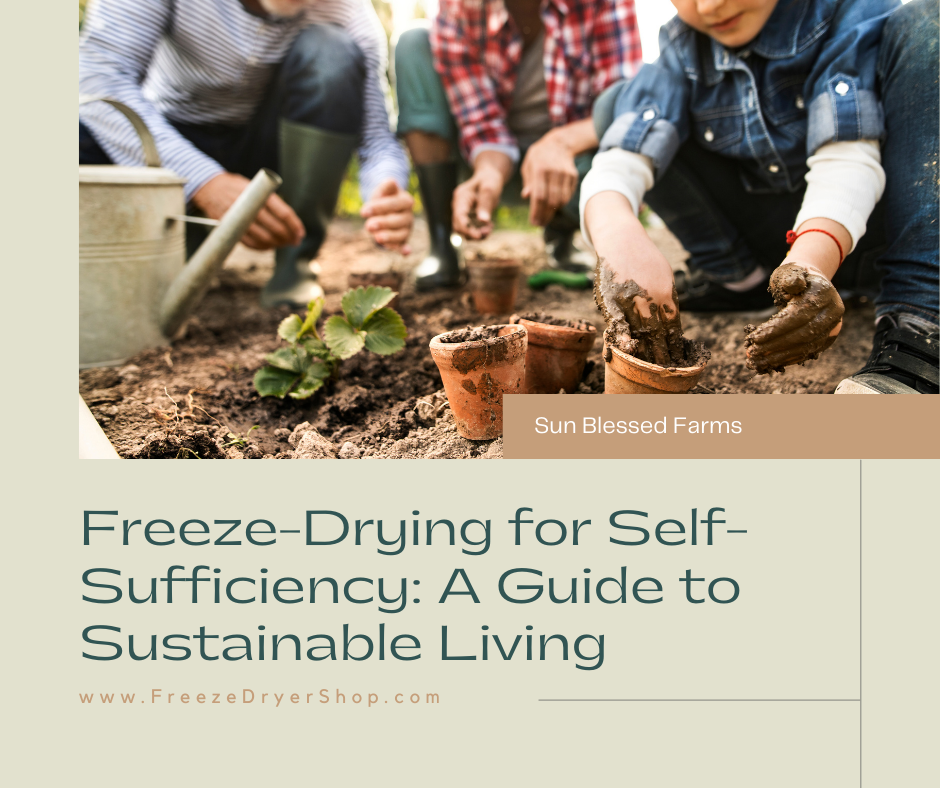The Path to Sustainability Part 1
How do I become more self sufficient?
The Path to Sustainability - Part 1: How to Become More Self-Sufficient
In a world where our daily lives are becoming increasingly reliant on external systems and resources, the concept of self-sufficiency is gaining renewed interest. Many individuals and families are looking to become more self-sufficient as a means to reduce their dependency on external sources, save money, and live a more sustainable lifestyle. This journey toward self-sufficiency often begins with understanding the basics and gradually making changes to one's lifestyle. In this blog post, we'll explore how a small family living in a semi-rural area of the United States can embark on the path to self-sufficiency.
Understanding Self-Sufficiency
Self-sufficiency is the ability to meet your basic needs without relying heavily on external assistance or resources. While complete self-sufficiency may be challenging to achieve in today's interconnected world, there are various steps and practices that can help you become more self-reliant in different aspects of your life.
Assessing Your Current Situation
Before you start your journey towards self-sufficiency, it's crucial to assess your current situation and identify areas where you can become more independent. Here are some key aspects to consider:
1. Food Production
One of the most significant aspects of self-sufficiency is food production. Start by evaluating your available space and resources for growing your own food. Whether you have a spacious backyard or just a small garden plot, you can begin by planting vegetables, herbs, and fruits that are suitable for your region. Consider learning about organic gardening practices and sustainable farming techniques to maximize your yields.
For families with larger properties, raising chickens for eggs and meat or keeping bees for honey and pollination can be rewarding and provide additional food sources. Additionally, explore the benefits of composting to reduce waste and enrich your soil.
2. Water Management
Ensuring a reliable and sustainable water source is essential for self-sufficiency. Evaluate your water supply options, including wells, rainwater harvesting systems, and water purification methods. Implement water-saving practices in your home, such as low-flow fixtures and rain barrels. Learning how to purify water from natural sources can also be valuable.
3. Energy Generation
Reducing your dependence on the grid and conventional energy sources is another significant step towards self-sufficiency. Consider installing solar panels or wind turbines to generate your electricity. These renewable energy sources not only reduce your utility bills but also contribute to a more sustainable lifestyle. Energy-efficient appliances and home insulation can further enhance your energy independence.
4. Sustainable Transportation
Explore sustainable transportation options to reduce your reliance on fossil fuels. Depending on your location, this might include cycling, carpooling, or investing in electric or hybrid vehicles. Reducing the number of car trips and using public transportation whenever possible can also have a positive impact.
5. Waste Reduction
Minimizing waste and recycling materials is an essential aspect of self-sufficiency. Reduce single-use plastics, compost organic waste, and recycle whenever possible. Consider repurposing items and adopting a "zero-waste" mindset in your daily life.
Building Skills and Knowledge
Becoming more self-sufficient often requires acquiring new skills and knowledge. Here are some areas where you can focus your learning efforts:
1. Gardening and Farming
If you're new to gardening or farming, there are numerous resources available, including books, online courses, and local gardening clubs. Learning about soil health, crop rotation, and pest management is vital for successful food production.
2. Food Preservation
Knowing how to preserve food through methods like canning, freezing, dehydrating, and fermenting is crucial for extending the shelf life of your homegrown produce. Learning these techniques can help you reduce food waste and have a stable food supply year-round.
3. Home Repairs and Maintenance
Being able to perform basic home repairs and maintenance tasks can save you money and reduce your reliance on external services. Consider learning carpentry, plumbing, electrical work, and other essential skills.
4. Renewable Energy
If you're interested in generating your electricity, take the time to learn about solar panel installation, wind turbine maintenance, and energy storage solutions. Many renewable energy courses and workshops are available to help you get started.
5. Foraging and Wildcrafting
Depending on your location, you may have access to wild edible plants and herbs. Learning how to identify and harvest these resources can supplement your food supply and connect you with the natural world.
Starting Small and Setting Goals
Embarking on a journey towards self-sufficiency can be overwhelming if you try to do everything at once. It's essential to start small, set achievable goals, and gradually expand your self-sufficiency practices over time. Here are some steps to consider:
1. Begin with a Garden
Start by establishing a small garden plot and growing a few vegetables and herbs. Gardening is a rewarding way to get hands-on experience and produce some of your food.
2. Learn Food Preservation
Once you have a garden producing surplus crops, learn how to preserve them through canning, freezing, or dehydrating. This will help you reduce food waste and have access to homegrown produce year-round.
3. Explore Renewable Energy
If you're interested in renewable energy, consider starting with a small solar panel installation to power specific appliances or lighting in your home. You can gradually expand your renewable energy system as your budget allows.
4. Develop DIY Skills
Take on DIY projects around your home to build practical skills. Simple tasks like fixing a leaky faucet, insulating windows, or repairing a fence can empower you to tackle more significant projects in the future.
5. Connect with the Community
Engage with your local community to exchange knowledge and resources. Joining gardening clubs, attending workshops, and participating in community gardens can be valuable sources of support and information.
Conclusion
Becoming more self-sufficient is a journey that requires dedication, learning, and adaptability. By assessing your current situation, acquiring essential skills, and starting small, you can gradually reduce your dependency on external systems and resources. Whether you aim to grow your food, generate renewable energy, or simply reduce waste, each step you take towards self-sufficiency brings you closer to a more sustainable and resilient lifestyle. In the next part of our series, we'll delve deeper into the role of community and collaboration in achieving sustainability.
Stay tuned for Part 2: "Building Sustainable Communities."
#SelfSufficiency #Sustainability #Homesteading #Resilience #SustainableLiving #GreenLiving #SustainableLifestyle #SelfReliance #HomesteadLife #EcoFriendly #ReduceWaste
Ready to work with
FreezeDryerShop?
Let's connect! We’re here to help.
Send us a message and we’ll be in touch.
Or give us a call today at (208) 648-2600
Agency Contact Form
More Marketing Tips, Tricks & Tools
Advice From The Experts at FreezeDryerShop.com!







